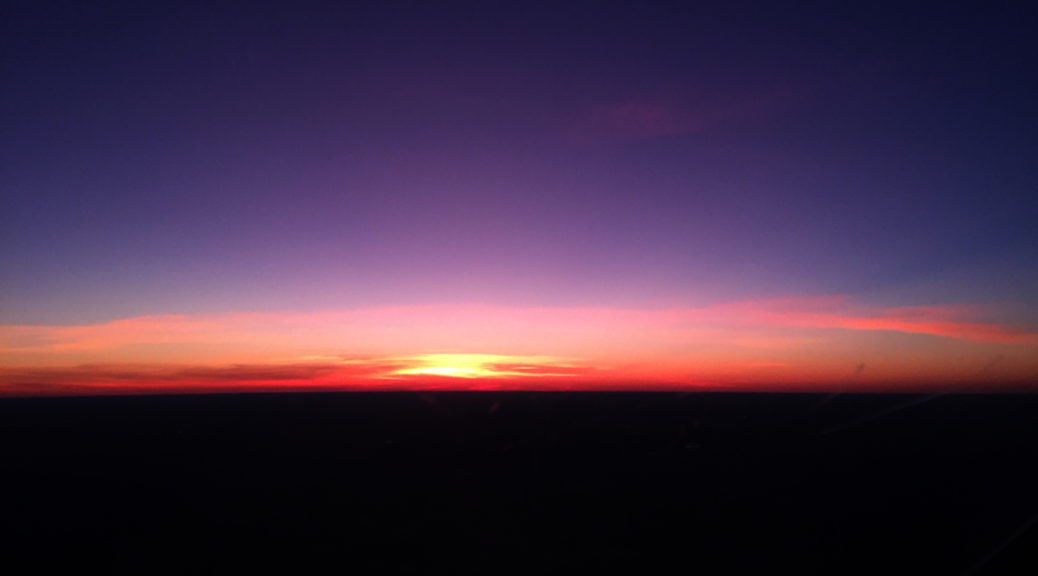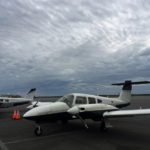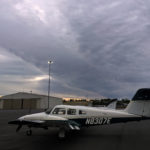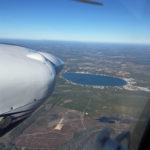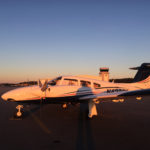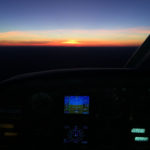Only the federal government could come up with a requirement for a 300 nautical mile flight with a landing at least 250 miles from where you started. If you fly out 250 and turn around and fly 50 you’ve flown 300 miles, but are still 200 miles from home. What do you do for the other 200 miles? Hmmm.
I’d like to fly part time as a retirement career. I’m doing the training to prepare for that.
The “long cross country” flight I mentioned above is part of ten hours of required solo aeronautical experience for a multi-engine commercial pilot – which is what I’m trying to become. These ten hours must also include five hours at night and ten night landings at an airport with a control tower.
It’s been a surprisingly convoluted process, but the ten hours are done. I have four of the ten night landings done. Last night, after the third try I finished the long trip.
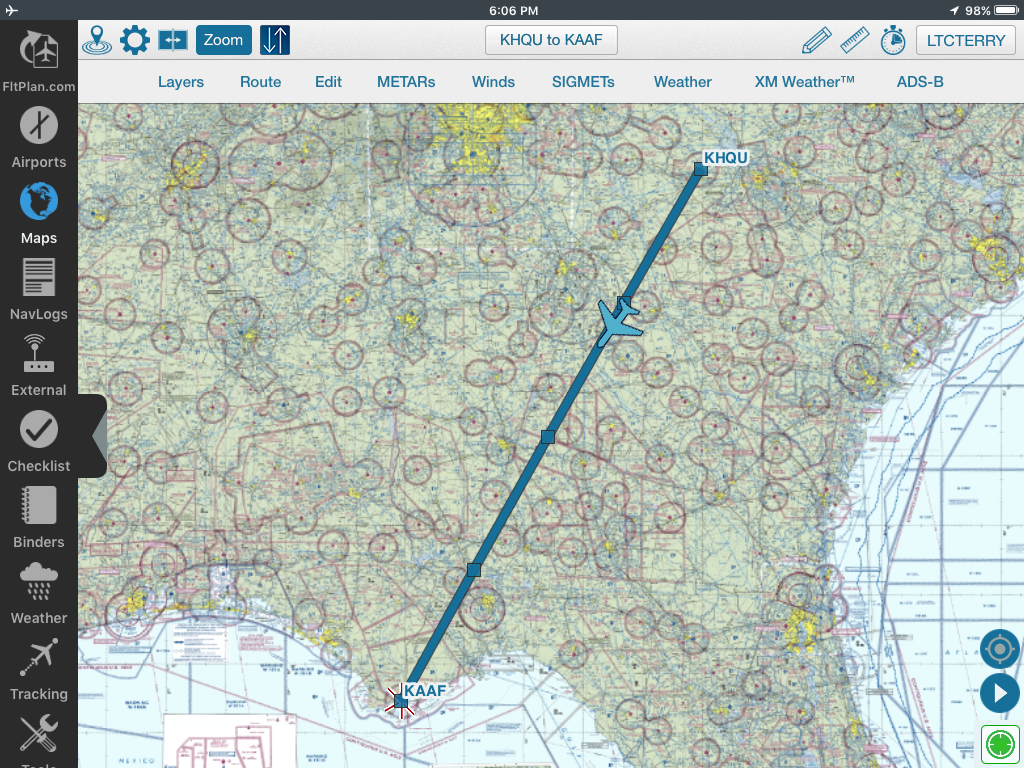
Back in the fall after work one day I launched towards an airport on the Florida gulf coast. Note “after work.” Everything took longer than expected. I would be arriving at my destination after fuel service stopped. Way after. I was getting tired. If I was this tired before finishing the first half of the trip, it was going to be a really bad idea to try to find avgas and turn around and fly back. What to do?
I chose to land at Tallahassee and spend the night. It’s OK to do the trip across a couple days. So, gas in the morning, fly south, land, turn around and fly back. Uh, not so fast. A huge tropical storm was moving in from the Gulf. Not only was I not going to be able to fly south, if I didn’t fly directly home I’d be stuck in the storm for a few days. So, home I went with no credit for the long cross country. It did count for solo flying, night flight, and a night landing, so not a total loss.
I was confident the emergency gear extension would work.
Try number two was two weeks ago. This time I went north. I planned a trip to fly to North Carolina in the afternoon, eat some BBQ, and fly back at night. It was an absolutely gorgeous afternoon. The flight went great. I could see the airport in the distance. I slowed down and began to plan a descent. Lowered the landing gear. Pop! Nothing happened but the circuit breaker popped. After some troubleshooting I chose to fly home – the weather was great and I had plenty of gas. I was confident the emergency gear extension would work.
Manual gear extension eventually worked fine. I was happy to land. It was a night landing, but no control tower, so “no credit” for that. Because I didn’t land elsewhere, despite flying over 500 nautical miles, the flight counts only as “local” and not “cross country.” Not a total loss as at least it counted for total time and night time.
Third time’s the charm, right? I launched for North Carolina right on time, repeating the previous trip. Tail winds were better at 3,000 feet than higher, so I stayed low until I got tired of the bumps. Climbed to 5,500. Beautiful. I had a 27-knot tail wind and once in a while a ground speed hitting 180 knots. (I knew in the back of my mind the trip home would be against a head wind, but the wind dies down after sunset, right?)
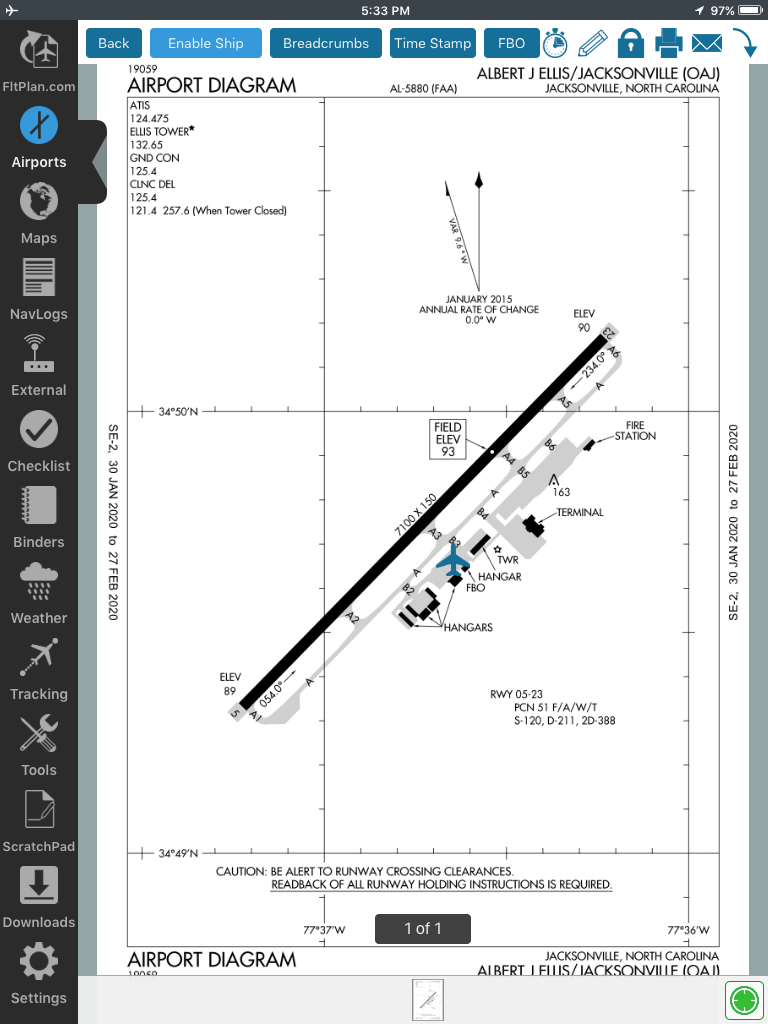
The landing gear came down fine. I landed, borrowed a car, and had a BBQ sandwich. Shortly after sunset I launched for home. Slow. Excruciatingly slow. In an airplane that can cruise at 140 I once had a ground speed of just 99 knots. 99 knots… Ground speed hovered around 100-102 for most of the flight, but slowly increased to 107. I slowed to 100 knots indicated as I hit 10 miles from home base. Ground speed went to 68 knots. Yikes. I’m paying $310/hour to fly an airplane that can do almost three miles a minute but only doing barely a third of that.
I need to go take the knowledge test, fly the last six night landings at a controlled field, and prep for the checkride. It’s slowly coming together. 🙂
